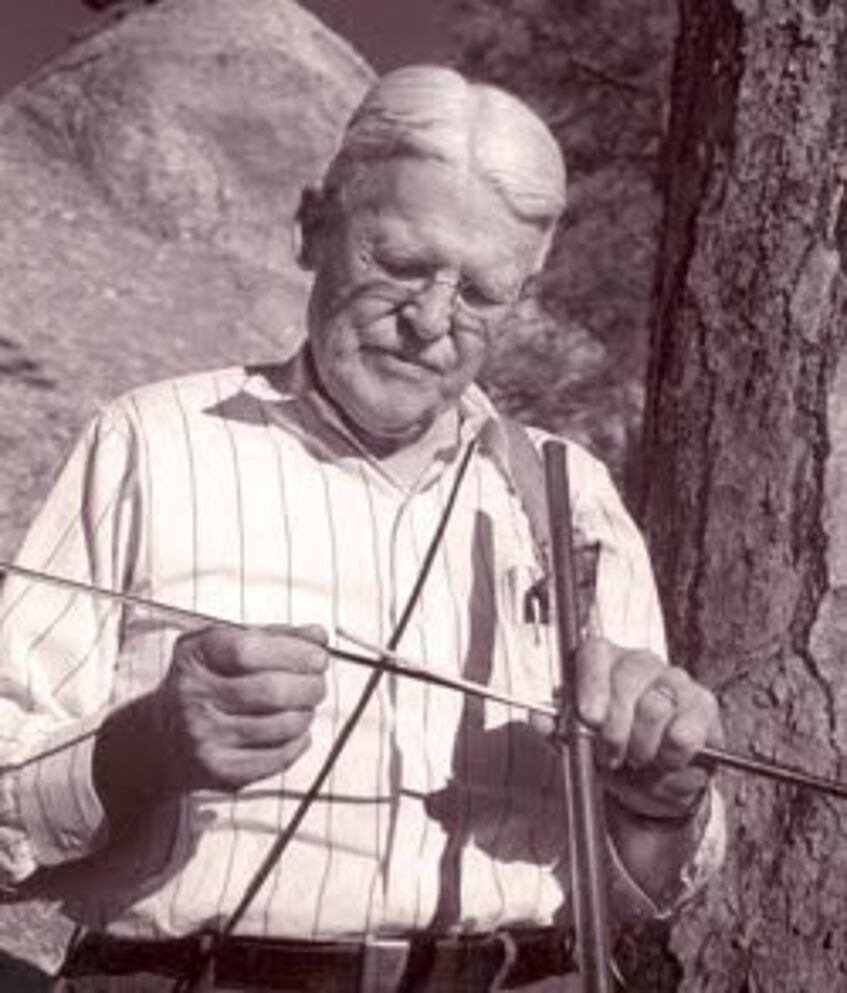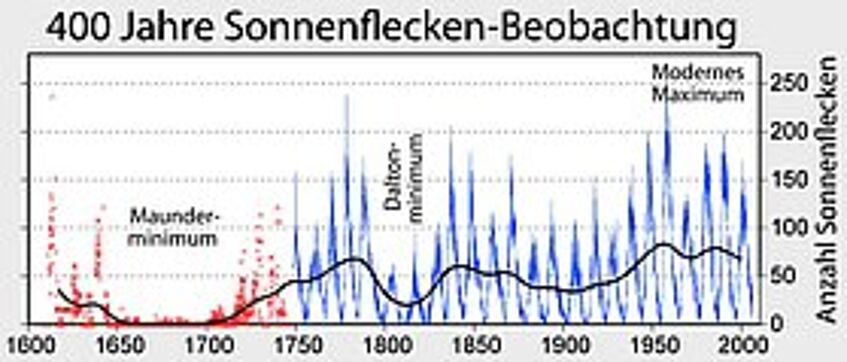History
The method was discovered by the American astronomer Andrew E. Douglass (1867-1962). At the beginning of the twentieth century, he looked for a relationship between the appearance of sunspots and their effects on the annual growth rates of tree trunks.
Although this research remained without results, the first dendrochronological standard curve was created as its by-product. With its help, starting in 1914, the exact temporal integration of hitherto undatable Indian settlements was achieved. In 1937 followed the founding of a still significant dendrochronological research facility: Laboratory of Tree Ring Research in Tucson, Arizona.

Andrew E. Douglass (1867-1962), inventor of dendrochronology

solar flare

sunspot cycle from the past 400 years (source: wikipedia.de)
In Europe, the forest botanist Bruno Huber (1899-1969), who started working in Munich in 1937, carried out initial research in this field and adapted the method to the more constant climate of Central Europe. Many of the laboratories founded since then turned towards specific aspects of the large set of issues: B. Becker (Stuttgart-Hohenheim) used wood recovered from river gravel as the starting material for his “South German oak standard curve”, while E. Hollstein (Trier) used timber found at archaeological excavations and historic buildings for his “Central European oak chronology”. The Swiss researcher F. Schweingruber, in turn, was particularly interested in questions on dendroecology and wood anatomy.
Biological background
In areas with pronounced seasons, trees produce concentric patterns of growth in their branches, trunks and roots. Such a growth zone is called a tree ring and is usually separated from the neighboring zones by a sharp border, which is formed through a complete arrest of growth during the winter. Although there are considerable anatomical differences between deciduous and coniferous trees, the zone formed in spring and early summer, the so-called early wood with thin-walled, wide cells, generally assumes the transportation of the sap. The late wood zone, formed in late summer with thick-walled narrow cells, primarily conduces to the mechanical consolidation. The growth widths of a tree depend primarily on its age and location; however, comparing simultaneously grown wood from different locations, it is possible to find a great similarity in the sequence of wide and narrower annual rings, within the biological range of variation. The similarity of these patterns within a climatological region develop by the effect of equal climate factors on all trees in this area, regardless of their location. With the help of statistical methods, it is now possible to prove the simultaneity of the growth of two lumbers independently of the absolute tree ring widths on the basis of the synchronicity of their tree ring curves (= the similarity of their patterns).
